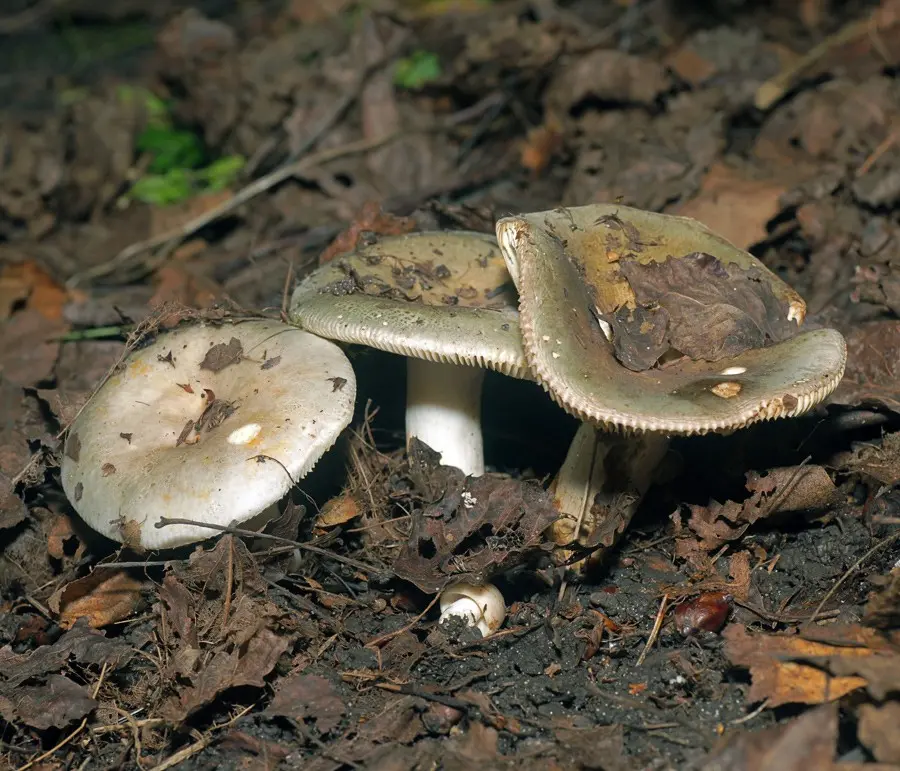Russula sp.
- Division: Basidiomycota (Basidiomycetes)
- Subdivision: Agaricomycotina (Agaricomycetes)
- Class: Agaricomycetes (Agaricomycetes)
- Subclass: Incertae sedis (of uncertain position)
- Order: Russulales (Russulovye)
- Family: Russulaceae (Russula)
- Genus: Russula (Russula)
- Type: Russula sp (Russula)
:
- thistle
- hot dog
- boulder
- stuffed cabbage

Russula is generally one of the most recognizable and easily identifiable mushrooms. And at the same time, an exact definition to the species is difficult, and sometimes impossible. Especially when it comes to photo identification.
“How can this be? – you ask. “That’s a clear contradiction!”
Everything is fine. No contradiction. You can determine the mushroom to the genus – Russula (Russula) – literally at a glance. It can be extremely difficult to determine the russula to the species: a lot of additional information is needed.
- A clear photo with good color reproduction of an adult, not an old mushroom.
- A photo of the cap from above, a photo of the plates and a photo of the place where the plates are attached.
- If there are cavities in the leg, you need a photo of the leg in a vertical section.
- You can read more about the photo for identification in this article: How to photograph mushrooms for identification.
- If a color change was observed on the cut, it would be nice to photograph this too, or at least describe it in detail in words.
- Description of the place where the mushrooms were found. Geographic data can be important, as there are species that grow only in certain regions. But information about the place is much more important: the type of forest, what trees grow nearby, hill or wetland.
- Sometimes it matters how the skin is removed from the cap: a third of the radius, half, almost to the center.
- Smell is very important. It is not enough just to smell the mushroom: you need to “injure” the pulp, crush the plates.
- Some species “reveal” their specific smell only when cooked.
- Ideally, it would be good to run a reaction for KOH (and other chemicals) on different parts of the mushroom and record the color change.
- And taste is always important.
Let’s talk about taste separately.
Taste your russula only if you are absolutely sure that it is russula. If there is no such confidence, give up the idea of uXNUMXbuXNUMXbtasting the mushroom.
Never pick up mushroom caps collected by someone and thrown, even if it seems to you that it is russula.
It is not enough to lick a slice of mushroom pulp. You just need to chew a small piece, “splash” to feel the taste. After that, you need to spit out the mushroom pulp and rinse your mouth thoroughly with water.
A clear photo and / or description of the color change on the cut will help in identifying Subloaders (yes, they are also from the genus Russula (Russula).
A clear description of the smell and taste will help to separate Valuy, Podvaluy (they are also russul, russula) and valui-like russula. It’s not enough to say “disgusting smell” or “nasty”, try to find some comparisons (for example, rancid oil, rotten fish, rotten cabbage, musty dampness, petroleum products or medicinal chemicals – all this is important).
The most common, respectively, well-described and fairly easily identified types of russula are several dozen, say, 20-30. But there are many more of them in nature. Wikipedia suggests there are about 250 species, Michael Kuo believes that there are many more, up to 750.
We can only wait until they are all studied and described in detail.
Here on WikiMushroom, you can find a list of russula on the Russula Mushrooms page.
Descriptions are being added gradually.
When determining russula, you should not focus only on this list, it is very incomplete, you should not try at all costs to determine the russula to the species. Often it is enough to indicate Russula sp – “some kind of russula”.
Photo: Vitaliy Gumenyuk.









